New Electric Vehicles For Sale
The Wallace Auto Group in Stuart and Fort Pierce has embraced the future of driving with new electric vehicles. These vehicles are not only environmental friendly, they also have a lower cost of ownership and service needs. Forget about scheduling that oil change with an EV, you won’t need one as they do not use motor oil!
The Wallace Auto Group is the Treasure Coast’s largest auto dealership group. Wallace operates a dealer group with 15 new car brands and an inventory of over 500 used cars for sale. If you are looking for a luxury car, look at a Cadillac, Genesis, Lincoln, or Volvo. Maybe you want an affordable SUV like a Jeep, Mazda, Hyundai, Kia or Volkswagen, Wallace has you covered. Looking for the power of a full size truck, come see a Chevrolet Silverado, Nissan Titan, or RAM trucks. The Wallace Auto group is your headquarters for new and used gas, EV, and hybrid vehicles. Continue reading to see some of the new exciting Electric Vehicles available now at the Wallace Auto Group.
Read the rest of this entry »Does a Car Loan Build Credit?
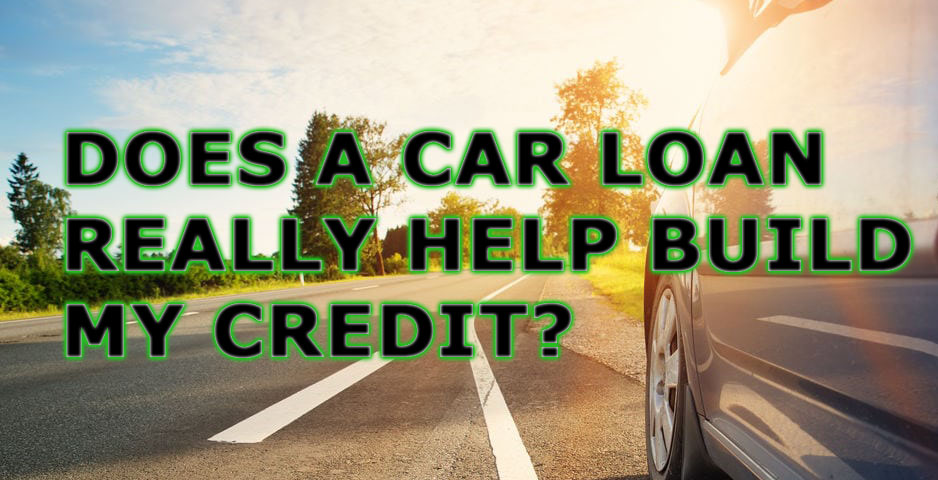
Does a Car Loan Build Credit?
Consumers looking to purchase a new car often want to know how it’s going to effect their credit. Does a car loan build credit or does it cause it to drop?

Consumers looking to purchase a new car often want to know how it’s going to affect their credit. Does a car loan build credit or does it cause it to drop? Ultimately, a car loan does not build credit; however, you can use the car loan to help increase your score.
A car loan has two common effects on credit:
- It causes a hard inquiry to be added to your credit report, which could temporarily lower your credit score by a few points.
- It increases your credit history. Provided you don’t have any late or missed payments, this increase can help build your score.
Factors That Influence Your Credit Score
There are five factors that influence your credit score:
- Payment history.
- Utilization ratio.
- Length of credit history.
- New credit.
According to Wallace Automotive Group’s Financing Team, payment history is the most significant factor that affects your credit score. It makes up 35% of your total FICO score, which is what lenders use most often.
The utilization ratio counts toward 30% of your credit score. It’s used to compare your total outstanding balance to your total credit limit. Your outstanding balance is the amount of money that you owe while your total credit limit is the maximum amount of money you’re able to borrow. The goal is to borrow 20% or less of your total credit limit. For example, if your credit limit is $2,000, then you shouldn’t borrow more than $400 per month.
When it comes to length of credit history, older is better. This is why you should always keep credit cards open, whether you’re using them or not. When a new credit account is opened, like a car loan, it might lower your score because it decreases the average length of your history. The length of your credit history makes up 15% of your score.
New credit affects 10% of your score. The more you apply for loans, especially in a short timeframe, the lower your score drops.
There are two types of credit:
- Installment.
- Revolving.
Installment credit means that you pay a fixed, regularly scheduled amount each month. Examples of this type of credit include car loans, student loans, and mortgages. Revolving credit is an open line of credit with constantly changing balances and payments, for example, credit cards. Credit types make up 10% of your total score.
Auto Loans and Your Credit
The chance of an auto loan affecting your credit report and your credit score is high. An auto loan is usually added to your report as an installment account, meaning you pay the same amount each month for a fixed amount of time. If you don’t have an installment loan on your credit report, then getting an auto loan could help your profile by creating a better credit mix.
If you pay your car payment on time every month, then your credit report will show that your auto loan is either “current” or “paid as agreed.” Due to the fact that your payment history has the greatest effect on your score, a “current” or “paid as agreed” status could greatly benefit your total score.
If you fall behind on your payments by 30 days or more, Wallace Automotive warns that not only will your credit score be damaged, but you’ll also be at risk of having your vehicle repossessed. If you’ve paid all of your auto loan payments on time but your credit report has an error showing that you made a late payment, you should look into filing a dispute.
Tips to Improve Your Credit Score
The quickest way to improve your credit report and score is by being a responsible buyer. This isn’t limited to only your monthly auto loan payment. If you pay the full amount of all of your bills on time every month, you will slowly improve a poor credit score. While there isn’t a quick fix to a bad score, being responsible with your payments will definitely help.
In addition to keeping up with your payments, Wallace Automotive Group recommends the following tips to improve your credit score:
- Keep your credit cards open.
- Have a healthy mix of credit types.
If you want to have a strong credit report, then you need a lengthy credit history. If you have a credit card that you opened years ago and never use, don’t close it. As long as it’s not maxed out, it will help improve your score by providing positive history. When lenders look at your current credit use, they like to see that you’re not using any more than 30% of your available credit. This gives them confidence that while you’re using your credit, you’re also keeping up with your payments.
You want your credit profile to have a healthy mix of installment credit, like auto loans and mortgages, and revolving credit, like credit cards. However, don’t apply for all of these at one time. A surge of credit applications will put up a red flag and make you appear desperate for money rather than simply looking to improve your credit.
Does a Car Loan Build Credit?
A car loan in and of itself does not build credit. In fact, Wallace Automotive Finance Department mentions that once you take on a car loan, your credit might actually experience an initial decrease. When you first apply for a loan, your application typically gets sent out to a few lenders. Whenever a lender reviews your credit report, a new inquiry will be added to your account. An inquiry is a record showing that someone has viewed your credit report.
Any inquiries that are made for an auto loan will appear on your report; however, most credit scoring systems will combine multiple inquiries so that they only count as one. Some of the newer credit scoring systems don’t count auto loan inquiries at all.
When you buy your vehicle and the auto loan becomes active, the debt will be added to your report. This is when you might lose a few points on your score. Once you prove that you can manage your new debt by making on-time payments, you should more than make up for those lost points.
If you plan on using a car loan to build credit, it’s important to understand that the loan itself will not help build your credit report or score. In fact, the loan will likely lower your credit score at first. However, if you establish a solid payment history by keeping up with your monthly payments, your auto loan should help to improve your credit score in the long run.
Wallace Automotive wants to help you buy a car and our experienced and friendly finance department will work with you and the banks to find the best loan that suits your budget and needs.
Contact us today to inquire about our current Lease and Finance programs that are available right now. Don’t forget to check out our Monthly New Vehicle Specials and Used Vehicle Specials for even bigger savings!
If you need an oil change, brakes, tires, or maybe have a check engine light on we recommend you stopping over at one of our Service Departments for a complimentary vehicle inspection. Browse our Monthly Service Specials for coupons and money saving deals also!
How To Get A Car Loan With Bad Credit

You may be able to get a car loan with bad credit, but you’ll want to carefully weigh the costs.
If you need a car loan but have less-than-perfect credit, your financing terms may be expensive. Lenders use credit scores to estimate the likelihood you’ll pay back your loan — the lower your scores, the more risk they believe they’re taking on. In exchange for that risk, lenders will usually charge a higher interest rate.
For example, someone with subprime credit (which Experian defines as scores of 501 to 600) received an average rate of 11.33% for a new vehicle and 17.78% for a used one in the second quarter of 2021, according to an Experian report. By comparison, the average interest rate on a 60-month new-car loan was 5.14% during that same period, according to the Federal Reserve.
We’ll look at some steps you can take to shop for an auto loan that may help lower the cost of financing a vehicle, as well as review our picks for auto lenders that offer car loans for bad credit.
How can I get financed for a car with bad credit?
These steps could help you improve your chances of getting approved for a car loan that fits your budget.
Check your credit
Before you begin shopping for a car loan, check your credit. Review your credit reports for any incorrect information and dispute those errors. Inaccuracies could lower your credit scores and hurt your ability to qualify for a loan.
Checking your credit can also help set your expectations before you start looking for a loan. You can check your Equifax and TransUnion credit reports for free on Credit Karma or request one free credit report from each credit bureau per year at annualcreditreport.com.
If you don’t need a new car right away, taking some time to build your credit could pay off — you may be able to qualify for a lower interest rate that could save you thousands on your auto loan. But if you can’t wait, you may want to consider asking a family member or close friend to be a co-signer. A co-signer with good credit could give you a better chance of getting approved for a loan or may help you get a better loan rate and terms.

Save for a down payment
Saving for a down payment can come with several benefits. First, a down payment may help you qualify for an auto loan more easily, especially if you have a low credit score. Without a down payment, the lender takes on more risk since it may lose more money if you don’t repay the loan and it needs to repossess the car. In fact, some lenders may require you to put some money down.
Plus, you’ll pay less interest with a down payment. The more money you put down, the less you’ll need to borrow for the car. That means you’ll pay interest on a smaller balance, lowering your total interest paid.
You may also get a lower interest rate if you make a down payment. Lenders consider your loan-to-value ratio — your loan amount versus the value of the vehicle — when setting your interest rate.
Determine how much you can afford
Think beyond your monthly loan payment as you figure out how much you can afford to borrow. Consider the costs of car ownership — such as fuel, regular maintenance, auto insurance, and any parking expenses or property taxes — and factor them into your budget.
It may be tempting to stretch your loan term to six or seven years in exchange for a lower monthly payment. But keep in mind that a longer loan term means you could end up paying more in interest over the length of the loan — and you increase your risk of becoming upside down on your loan, which can create some challenges when it’s time to sell or trade in your car because you’ll owe more than it’s worth. Our auto loan calculator can help you estimate how much you’d pay in interest on a car loan.
Shop with different lenders
Shopping around and comparing rates and loan terms across lenders may help you find the best loan for your needs and your budget. If you have bad credit, here are some lenders you might consider.
- Your current bank or credit union — If you already have a relationship with a bank or credit union, that can be a good place to start.
- Online lenders — Some online lenders and lending platforms specialize in car loans for people with bad credit. They may also allow you to apply for prequalification directly on their websites. If you’re prequalified, you’ll be able to see the estimated loan rate and terms you may qualify for. Just keep in mind that prequalification isn’t a guarantee you’ll be approved for the loan or the estimated loan terms.
- Car dealerships — Dealerships typically have relationships with a number of banks and finance companies, which means they may be able to find a lender in their network that will approve you for a loan. Some dealerships also have special financing departments that are dedicated to helping people with poor credit.
- Buy-here, pay-here dealerships — If you can’t get approved for an auto loan anywhere else and you need a car, a buy-here, pay-here dealership could be an option — but consider it a last resort. These “no credit check” dealerships offer their own loans to people with bad credit — and their interest rates tend to be higher than those offered by banks and other lenders.
To minimize the impact that shopping for an auto loan can have on your credit, it’s a good idea to shop for rates within the same time period. FICO scoring models count multiple credit inquiries of the same type within a 45-day period as a single inquiry. VantageScore counts multiple inquiries within a 14-day period as a single inquiry.
Keep in mind each time your credit is ran by a lender an average of 5 points are deducted from your credit score. These points will be removed within 18 months.
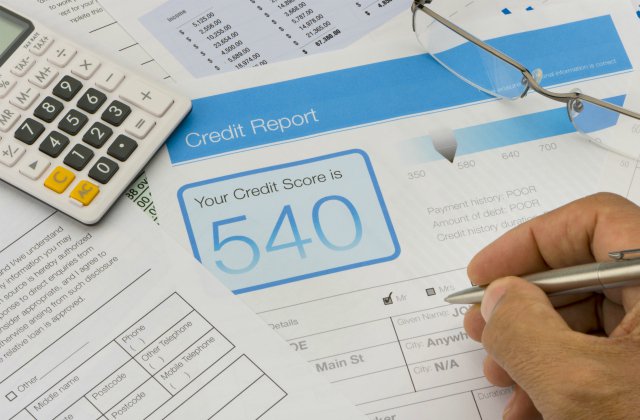
Can I get a car loan with a 500 credit score?
It’s possible to get a car loan with a credit score of 500, but it’ll cost you. People with credit scores of 500 or lower received an average rate of 13.97% for new-car loans and 20.67% for used-car loans in the second quarter of 2021, according to the Experian State of the Automotive Finance Market report.
That’s a big difference from the loan rates for people with credit scores of 661 to 780 (considered prime) — they received average rates of 4.21% for new-car loans and 6.05% for used-car loans.
Getting a car loan with a credit score of 500 could be tough, too. The Experian report shows that only 0.37% of new-car loans and 4.35% of used-car loans issued in the fourth quarter of 2019 went to people with credit scores of 500 or lower.
Best car loans for bad credit
Here are some of our picks for lenders that offer car loans for bad credit around you right now.
Good for people who have filed bankruptcy: EZPAY CARS
In general, bankruptcies in your credit history can affect your ability to get approved for an auto loan. But EZPAY CARS considers applicants who have filed for bankruptcy in the past — as long as the bankruptcy has been discharged.

Next steps
Car loans for bad credit are out there, but they can be expensive. Taking steps to improve your credit before car shopping can lessen some of the financial burden.
If you’re unable to delay your car purchase, consider buying a lower-priced, but reliable, used vehicle that meets your needs but requires you to borrow less. As you pay down your loan and work on improving your credit, you may be able to refinance for a better rate down the road.
21 Helpful Local Car Buying Tips & Expert Advice
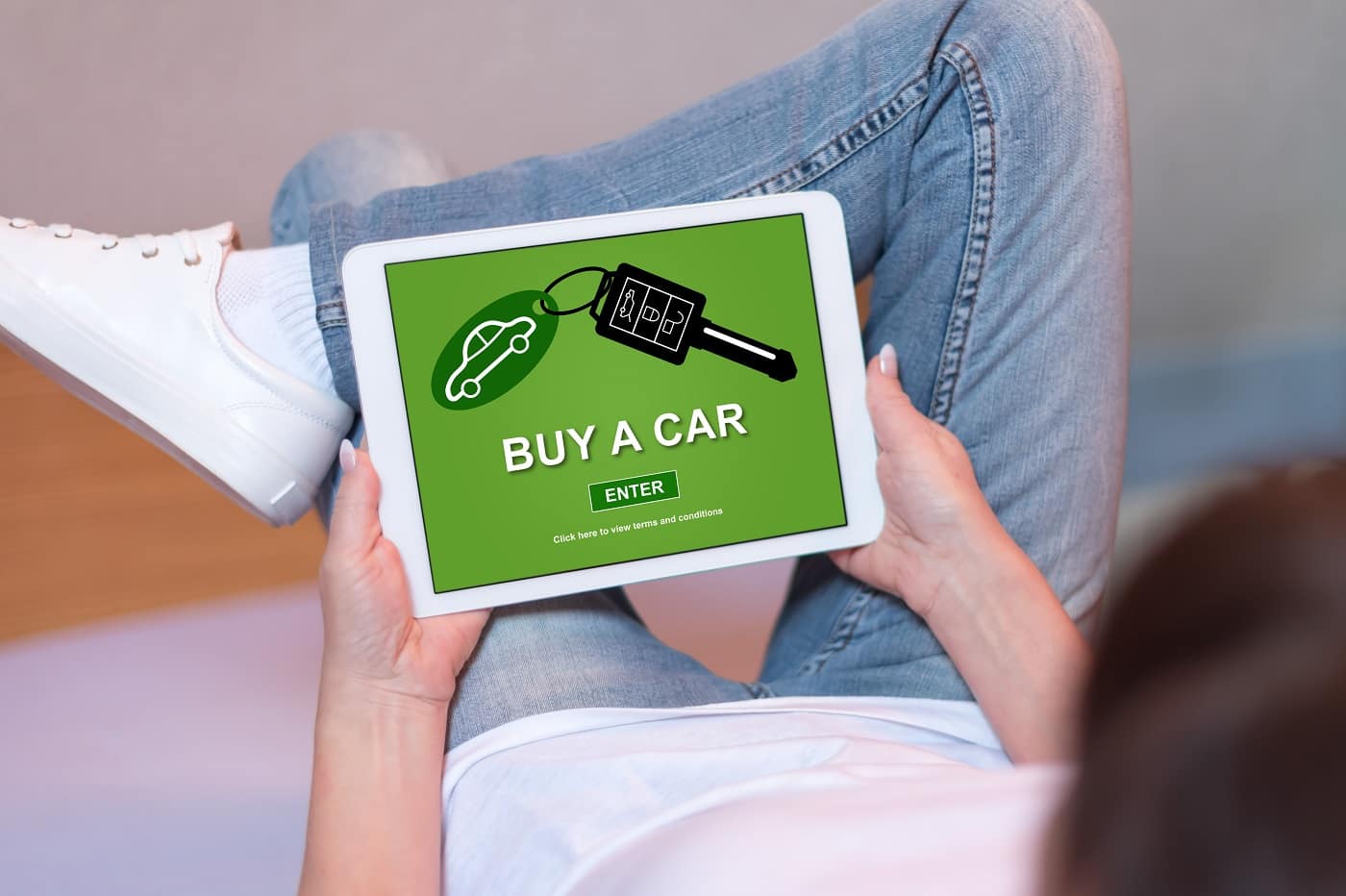
21 Helpful Local Car Buying Tips & Expert Advice
If your prehistoric Junker has finally driven its last mile, or if you’ve been researching new cars to buy for months on end, a trip to your local auto dealership looms just over the horizon. (Congratulations!)
For lots of shoppers, however, even thinking about purchasing or leasing a vehicle can launch their blood pressure through the roof. The haggling, negotiating, down payments, paperwork… everything about buying a car can be stressful for the average person.
So, how does one get through the entire car-buying process with all their hair intact? What’s the best way to shop for and buy a car? Store these 21 great tips in your brain’s filing cabinet to ensure you don’t get too frustrated when shopping for and buying your new vehicle.
21. Know Your Budget
Your heart may crave that new 2021 Kia K5 in White, but what does your head say? If your budget doesn’t support a purchase that big, don’t even try to convince yourself otherwise. You may just end up with an upside-down car loan, and that’s much less enjoyable than a more affordable pineapple upside-down cake.
But how do you calculate your budget when buying a new car?
Most experts recommend spending less than 25% of your monthly income on all the vehicles in your driveway. This includes monthly lease or finance payments, insurance fees, registration costs, and any costs associated with fuel and auto maintenance. You can also use our online car payment calculator to help you determine your budget before even setting foot in our Sedalia Toyota dealership.
20. Buy vs. Lease
Do you know whether you want to finance (buy) or lease a new vehicle?
- You should look into buying a new car if:
- You drive more than 12,000 miles annually;
- You like building equity and selling or trading in your vehicles;
- You have enough for a down payment;
- Your credit rating is excellent;
- You like to add aftermarket parts and accessories to your cars;
- You’re good at keeping up with repairs and maintenance; and
- You can pay more each month, as financing a car can be more expensive than leasing in the short term.
On the other hand, you should consider leasing a new vehicle if:
- You want lower monthly payments;
- You don’t have an adequate down payment on hand;
- You like the convenience of having a vehicle always under warranty;
- You keep a tidy car, inside and out;
- Your love for the latest technology knows no bounds;
- You enjoy getting a new car every few years; and
- You don’t drive too often/too many miles each year.
19. New vs. Used vs. Certified Pre-Owned
Similarly, do you know if you’d like your vehicle new, pre-owned, or something in between?
You’ll pay more overall for a new car than you would a used or CPO vehicle, but you’re also benefitting from the newest technology, better fuel economy, advanced safety features, and a full New Vehicle Warranty. If those are important to you, consider buying a new vehicle, like a Toyota Corolla.
With a used vehicle, your wallet will thank you. However, you won’t always be guaranteed a warranty or any of the modern features available in newer vehicles. If you do choose to go pre-owned, we suggest researching and test-driving the best used vehicles you can find before making a decision.
Certified pre-owned vehicles are great options for shoppers who enjoy the reliability of a new car at a used-car price. For instance, every affordable Certified Pre-Owned Kia or Hyundai at our dealership is a late-model vehicle that’s been inspected and comes backed with an extended warranty.
18. Research, Research, Research
As mentioned above, it’s imperative that you do your due diligence and research every vehicle of interest to you. What are their 5-year value estimates? Are there any ongoing recalls with each particular model? Do any of the vehicles have features that you absolutely need? What have owners said about these models? Has anything changed from the previous model year?
Narrow down your selection to the top 5, follow up with step 27 (below), then visit local car dealerships near you to take each for a test drive.
17. Apply for Auto Loans
Always review current interest rates and secure your auto financing before going into the dealership. You can apply for car loans online at most dealership sites, including right here at Wallace Auto Group in Stuart, as well as at local credit unions or banks.
Oh – and get your quote in writing! There’s nothing worse than picking out the perfect vehicle, only to discover that your financing fell through because nothing was ever formalized.
16. Check for Incentives and Sales
Do you know if your dealership has any cash-back promotions, lease incentives, or exclusive discounts that apply to the vehicle you’d like to buy? Have you checked the vehicle manufacturer’s official website for current offers? Sometimes deals stack, too, which is something you should absolutely take advantage of.
View our current Kia specials, used car deals, and other Brand incentives such as military discounts and student discounts.
There’s even discounts out there for Educators and Teachers, just ask your local dealership!
15. Shop Everywhere
As much as we’d love to say, “Only shop at our Wallace car dealerships,” we can’t do so with a clean conscience. It’s important to shop around to find the best rates, pricing, and dealer to handle your sale or lease. Having a quality relationship with your auto dealer is equally as essential as price, too.
14. Negotiate Confidently
When the time comes to sit down at the negotiating table, let your salesperson know that you’re all business. (Easier said than done, right?)
Be confident. You hold all the power in this transaction, even if you don’t feel powerful. Throw out a low number to start. If the salesperson bites, you didn’t go low enough. If the salesperson won’t budge, walk away. If the salesperson brings the price down to your level – well, you’ve just successfully negotiated your next car purchase.
13. Add Add-ons Sparingly
Although we like offering our customers the best Kia, Hyundai, Jeep, Nissan, Chevrolet and many other vehicles with the best features, we realize that add-ons and accessories can get expensive. So, as much as it pains us to say this, we suggest purchasing add-ons if they help your day-to-day commute, provide more safety, or make life more convenient. Do you need GPS navigation? It could help if you travel to new places frequently, but if you barely leave the sanctity of your living room or office, your smartphone probably suffices.
12. Get a Mechanic’s Advice
When buying a used car, you should consider getting it looked at by a qualified third-party mechanic. A mechanic can inspect the vehicle for potential issues, which will give you more leverage to negotiate a better price – if you even want to continue with that purchase.
11. Know the Lingo
Like any industry, dealers and salespeople have their own language. If you don’t speak that language, you may have a difficult time getting the best deal. Review industry terms and common phrases here.
10. Don’t Grow Too Attached
You really wanted to drive that beautiful Hyundai Palisade home, but something just didn’t click – and that’s okay because there are plenty of four-wheeled fish in the sea! If, for whatever reason, you can’t come to terms on your top pick, search elsewhere. Don’t go over your budget or sacrifice anything just to be able to claim a victory. Oftentimes that victory turns into a defeat.
9. Don’t be Afraid to Walk Away
Again, you have the power. If you aren’t satisfied with your experience at the dealership or with a salesperson, calmly stand up and walk right out those doors. You don’t even need to utter a word – powerful people speak with their actions, right?
8. Embrace Suggested “Alternatives”
Traditional and modern shoppers, like yourself, will typically visit our Wallace Auto Group car dealerships with a particular model in mind. However, don’t automatically turn a cold shoulder to the idea of buying a different vehicle. Salespeople may recommend alternative models with features that better match your wish list, budget, and situation.
For instance, if stock is low on Kia Telluride SUVs, prices may be higher; but if your dealer has a big selection of Tellurides for sale, you may be able to get one for a great price. Ask and ye shall receive (suggestions, at least).
7. Always Double Check Paperwork
Tiny print. Missed signatures. Amended terms. If you don’t check these out, they may haunt you. Don’t sign papers that have errors or terms you didn’t agree to; contracts are difficult to break.
If at all possible, attempt to complete some of the paperwork online. This allows you to take your time reviewing documents, while also speeding up your purchase at the dealership.
6. Read Dealership Reviews
If your chosen dealership lacks good customer reviews, there may be a reason why. Be sure to read the reviews to see if there’s a common thread between bad ratings. Oftentimes, customers will share common complaints about an aspect of the dealership that wouldn’t impact you and your new car purchase, such as poor recall repair support or long waiting times.
5. Try Refinancing
Did you know you can refinance an existing car loan? Depending on when your original financing went through, you may be able to get a better auto loan with a lower interest rate. After purchasing your vehicle, check auto finance rates every few months to see if refinancing is a good option.
4. Get Auto Insurance Quotes Before Buying
Request quotes from your insurance agent for each vehicle model you’re interested in. You should also consider requesting quotes from multiple auto insurance companies to ensure you’re getting the best rate available.
3. Don’t Assume
Never assume that something should be a certain way. If you want a specific feature in your Hyundai Santa Fe, ask about it. If you want that gift card or free oil change for taking a test drive, ask about it. If you want to sign up for that 3-month trial of SiriusXM Radio, ask about it. Otherwise, you may get home to find your dreams dashed.
2. Schedule Your Test Drive
You can always swing by your local dealership to check out their inventory, but scheduling a test drive online or by phone is best. This way your dealer can have your car cleaned, prepared, and waiting outside for your arrival. Click here to schedule your test drive at Wallace Auto Group in Stuart, FL.
1. Bring the Family
Shopping for a car is a family-friendly event. So, when you arrive for your test drive, be sure to bring the entire gang. That way, everyone can test out the back seat, climate controls, safety or driver-assist features, and whatever other gizmos and gadgets are crammed in the car.
Tips for Buying a Used Car in South Florida

Used Car Buying Tips for Buying a Used Car in South Florida
Buying a previously owned vehicle can be a great way to save big on one of your most expensive purchases, but only if you do it right. Don’t get caught up in the excitement of your car purchase and end up with someone else’s headache. If you’re looking for a trusted way to buy a reliable used car in South Florida, follow these tips:
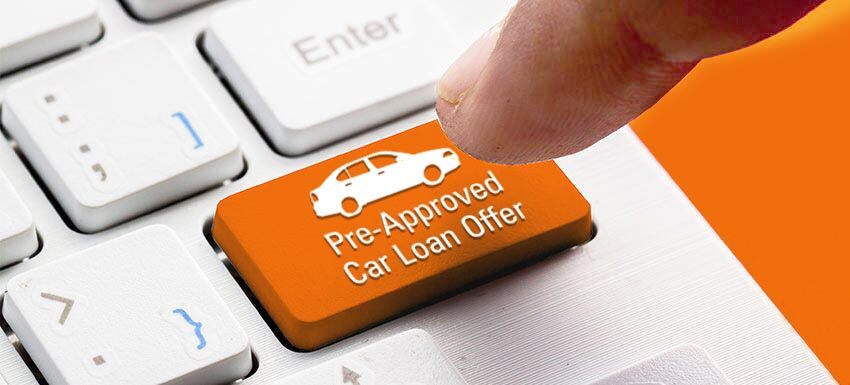
Tip 1: Get Preapproved & Set a Budget
We will never be able to express the importance of getting preapproved for any loan, especially one for a used car. Walking into a dealership with a preapproval will help you not only stick to your budget, but it also lets the dealer know you’re serious about buying a car.
Thinking of paying for the used car in cash? Just because that sounds like a good idea doesn’t mean it is always the best strategy. Spending the bulk of your budget on the vehicle itself can eliminate the financial flexibility to pay for car insurance, any deductibles (should you have an untimely accident) or for any possible future vehicle repairs. This is where we would recommend considering low interest financing rates as an option to keep cash in your pocket, while still having that financial flexibility.
You can get a really good interest rate from a local credit union on a Auto Loan, CPO Car, or Used Car with a good credit score. This helps when getting the best monthly payment possible on your new or used car loan.
Tip 2: Begin the Research Process Yourself
If you prefer shopping on your own and to do your own research, it’s recommended to use national on-line sites such as Edmunds.com, NADA.com and/or AutoTrader.com for reliable used vehicle values.
Be careful to look out for vehicles with accidents, that are flood-damaged or with higher miles as they can lower the value of your vehicle after purchase. Make sure to also check the Kelley Blue Book value on the vehicle that you are interested in purchasing. This will help you make a decision whether the car is worth the selling price and is a good deal or not.
Most franchised new car dealers have a wide selection of used vehicles on site. Many of those vehicles are Certified Pre-Owned (CPO) and come with an extended factory warranty, which is great option for consumers choosing to purchase a used vehicle.
Tip 3: Purchasing from an Independent Dealer
There are many reputable independent dealers in South Florida; however, be sure to check their yelp reviews (yelp.com) and take the time to review their customer service history with the Better Business Bureau (BBB.com). The few minutes you spend on this research may save you from a potential headache.

Step 4: Always Get a Vehicle History Report
Once you’ve narrowed down your search, and before you purchase any used vehicle, be sure to ask us to provide a CARFAX report. This will show any collisions, especially with air bag deployment, about which you should be aware. Its recommended not to purchase any used vehicle without reviewing one of these reports. You will want to know all of the maintenance records that come with the vehicle.

Step 5: Inspect & Test Drive the Vehicle
Before making your final decision, take your top used car choices out for a test drive. If you’re not sure what to look for either take our Used Car Checklist with you or connect with an Auto Advisor as they will know what you should be looking for.
Step 6: Making it Official
After you have decided on a used car and made sure it suits your needs, it’s time to make it official! Contact Wallace Auto Group to tie up loose ends and finalize your lending documents.
Now that you have some helpful tips when buying a used car in South Florida, it’s time to get your new ride!
How to Buy a Used Car in 10 Easy Steps

How to Buy a Used Car in 10 Easy Steps
If you’re looking to buy a used car, you’re far from alone nearly 40 million used vehicles change hands each year. Here is our used car buying guide for South Florida drivers.
With so many choices, finding that one right car for you can be a challenge. So we’ve created a list of steps to help make finding
and buying your perfect used car a breeze.
1: How Much Car Can You Afford?
A rule of thumb: If you’re taking out a loan to pay for your car, your car payment shouldn’t be more than 20% of your take-home pay. If you’re sticking to a tight budget, you may want to spend even less. Used cars will need a little extra attention from time to time: new tires, maintenance and the like. And then there are the other ownership costs shoppers sometimes forget to account for, such as fuel and insurance.
If the car you’re planning to buy is out of warranty, it might be a good idea to set aside a “just-in-case” fund to cover any unexpected repairs.
Check to see how much you are approved for with our quick and easy pre approval finance application here at Wallace Auto Group.
2: Build a Target List of Used Vehicles
It’s no secret that the Chevrolet Jeep and the Kia Sportage make for good used cars. But they might cost a few thousand more than a comparable Hyundai Elantra or Kia Optima, even though these are good cars too. So if you’re looking to save money, consider more than one brand. We suggest making a list of three cars that meet your needs and fall within your budget. Wallace reviews have great information to guide your choices.
If you’re planning to buy a vehicle that is less than 5 years old, consider one that’s certified pre-owned (CPO). CPO vehicles have long-term warranties that are backed by the carmaker, not just the dealership selling it to you. Franchised dealerships that sell that same brand new are the only ones who can sell a CPO car of the same brand. So if you wanted a CPO Chevy Malibu, for example, you’d need to buy it from a local South Florida Chevy dealer.
3: Check Prices
Prices are driven in part by where you’re shopping. You’ll find used cars in used car sections of new car dealerships, independent used car lots,
used car retailers such as EZPAY Cars, and websites where private-party sellers list their cars. Of the four, private-party cars will typically have
the lowest selling price. CPO cars will usually cost the most, but for the reasons we’ve noted. To see what other people are paying for the models
you’ve picked out, Wallace Auto Group offers a quick way to see the average price paid for the car in your area.
4: Locate Used Cars for Sale in Your Area
One easy place to start building your target list is the Wallace Auto Group used car inventory page. To find exactly the car you want, you can filter your search by many factors, including the miles on the car’s odometer, its price and features, and dealer’s distance from you. Use the websites for other used-car marketplaces mentioned to save time.
5: Check the Vehicle History Report
Unless you’re buying the car from a close friend or family member who can vouch for its history, plan to get a vehicle history report. This early step is essential. If the car you’re looking at has a bad history report, the sooner you know the better.
AutoCheck and is the best-known source for vehicle history reports. These reports can reveal vital information about the car, including whether the odometer has been rolled back or if it has a salvage title, which means it has been declared a total loss by the insurance company. You’ll use the car’s vehicle identification number (VIN) to get this information, and in some cases, all you need is the license plate number. Most major dealers offer these reports for free if they have the vehicle in their inventory.

6: Contact the Seller
Once you find a good prospective car, don’t run out to see it. Call the seller first. This step is an excellent way to establish a relationship with the seller and verify the information about the car. You can ask private-party sellers why they’re parting with a car or whether it has any mechanical problems. And if you’re buying from a dealer, a phone call or text is the best way to ensure the car is still in stock. You can even reach out to the dealership via social media or Google My Business listing.
Sometimes the seller will mention something that wasn’t in the ad that might change your decision to buy the car. If you want to go deeper, our used car questionnaire is a good reminder of what to ask. You will notice that the last question on our list is the asking price of the car. Although many are tempted to negotiate even before laying eyes on the car, it’s better to wait. Once you see it, you can tie your offer to its condition.
If things are going well, set up an appointment to test-drive the car. If possible, make it for daylight hours. That makes it easier to see the car’s condition.

7: Test-Drive the Car
Test-driving a used car is the best way to know if this is the right car make and model for you. It’s also a good way to assess this particular car’s condition. So tune out distractions and focus on the car. Here are some things to check:
- Is it easy to get in and out of the car without stooping or banging your head?
- Is there enough headroom, hip room and legroom? Remember to check the space in the back seat too.
- Is the driving position comfortable? Do you sit too low, too high or just right in the car? Can you tilt or telescope the steering wheel for a better fit?
- Are the seats comfortable? Are they easily adjustable? Is there a lumbar support adjustment for the driver? How about the front-seat passenger?
- Is the check engine light on? If so, get that problem checked out before buying.
- How is the visibility? Check the rearview mirror and the side mirrors. Look for potential blind spots.
- Use your nose. Do you smell gas, burning oil or anything amiss?
- Check out the tires. How old are they? Is there enough tread left?
- How are the brakes? Are they doing the job of stopping the car? Do they squeak?
- Pop the hood. You don’t have to know a lot about cars to see if something looks wrong. If something is leaking, steaming or covered in oil, it’s time to ask questions.
- Does the air conditioning blow cold? Do headlights, brake lights and turn indicators work? Test them to be sure.
After the test drive, ask the owner or dealership if you can see the service records. These will show you if the car has had the scheduled maintenance performed on time.
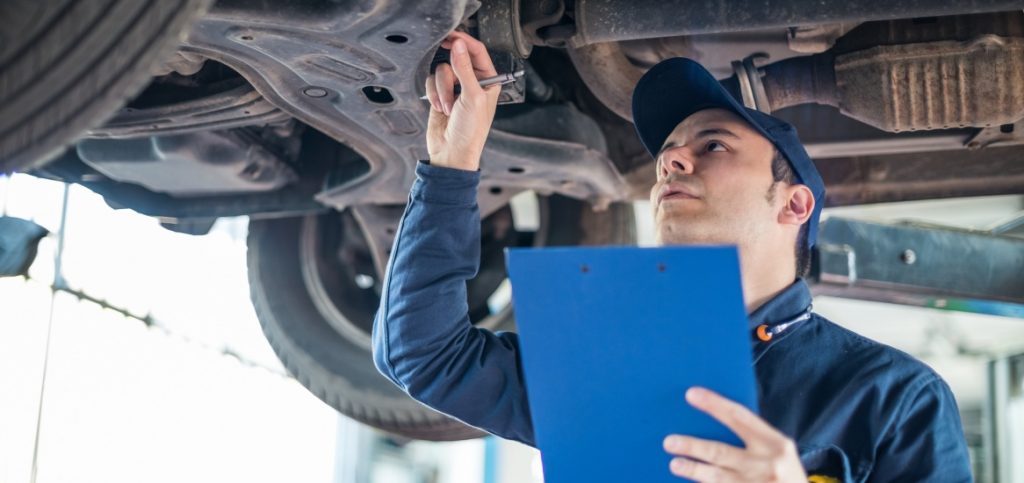
8: Have the Car Inspected
If you like the car, consider having a mechanic inspect it before you buy it. If you don’t have a mechanic, Google and Yelp are good places to read local shops’ reviews. A pre-purchase inspection costs between $100-$200 and can alert you to problems you may not find yourself. It’s a smart investment that we definitely recommend doing before you finalize your purchase.
A private-party seller will probably allow you to do this without much resistance. Most dealerships will let you borrow a car for an outside mechanic to inspect. You’ll be paying for this, of course. If it is a CPO car, there’s already been an inspection and the car has a warranty, so there is little reason to take it to an independent mechanic.
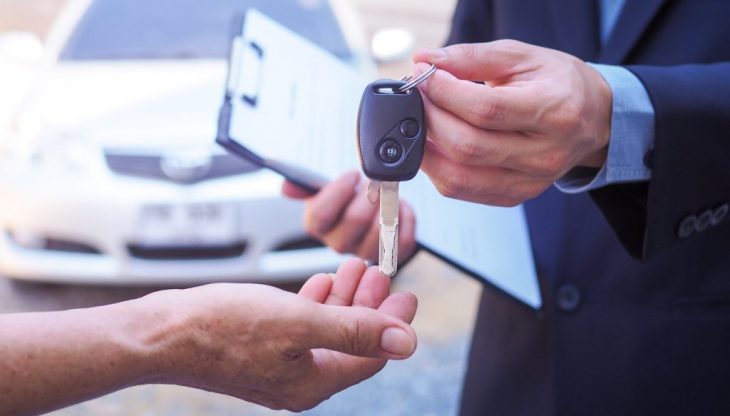
9: Negotiate a Good Deal
Does the idea of “talking numbers” fill you with dread? It shouldn’t. Negotiating doesn’t have to be a drawn-out, traumatic experience. If you are reasonable and have a plan, chances are you can make a deal pretty quickly and easily:
- Decide ahead of time how much you’re willing to spend to get the car. But don’t start with this number in your discussion.
- Make an opening offer that is lower than your maximum price, but in the ballpark based on your average price paid research in Step 3. Explain that you’ve done your research on Edmunds or wherever else, so you have facts to support your offer.
- If you and the seller arrive at a price that sounds good to you and is near the average price paid, you’re probably in good shape.
- And remember, the people on the other side probably dislike negotiating too — even if it’s their job.
- Get a monthly payment, low interest rate, and ideal auto loan with the negotiation process.
10: Get the Paperwork Done
If you are at a dealership, you’ll sign the contract in the finance and insurance office. There, you will likely be offered additional items such as a warranty, anti-theft devices, prepaid service plans or fabric protection.
Some people want the peace of mind that comes with extended warranties, so this is something you might want to consider unless the car is still under the manufacturer’s warranty or is a CPO vehicle. Review the dealership sales contract thoroughly. In most states, it lists the cost of the vehicle, a documentation fee, possibly a small charge for a smog certificate, sales tax and license fees.
If you are buying a car from an individual owner, make sure the seller properly transfers the title and registration to you. It’s important to close the deal correctly to avoid after-sale hassles. Before money changes hands, ask for the title (which is sometimes called the pink slip) and have the seller sign it over to you. Rules governing vehicle registration and licensing vary from state to state. If possible, check with your local department of motor vehicles to make sure there are no past-due registration fees you’d be responsible for should you buy the car. Whether you buy from a dealer or a private party, make sure you have insurance for the car before you drive it away.
Once you’ve done the paperwork, it’s time to celebrate your new purchase — maybe with a drive-thru dinner. You deserve it!
What To Look For When Buying A Used Car

What To Look For When Buying A Used Car
Buying a used car can be a good option when you’re looking for a quality vehicle without the higher price tag. While a used car can be a sensible option, buyers still need to make smart choices. There’s a lot to look for when buying a used vehicle, but here are some ways to help you choose the right car for you.
INSPECT THE CAR’S EXTERIOR AND INTERIOR
Inspect both the outside and inside of the vehicle. Look over the exterior of the vehicle, says CARFAX, checking for scratches, dents and rust. You probably don’t need to be worried about small dings or scratches, but larger areas of damage may be cause for concern. CARFAX also recommends checking to see that body panels line up evenly, as uneven panels may indicate the vehicle was in an accident but not repaired well. It’s also a good idea to open and close the doors, hood and trunk to see how easily they move. Kelley Blue Book (KBB) suggests checking for paint overspray on the inside of the hood, trunk and doors and to be sure the color of the vehicle matches on all parts. If you notice overspray or mismatched paint, that part was likely repaired and repainted.
Inspect the interior by sitting in all the seats and looking for unusual wear and tear in the upholstery, says CARFAX. If the interior of the car smells musty, check the carpet and floor mats for signs of a a leak or water damage.

GO FOR A TEST DRIVE
Going for a test drive can help you determine the condition of the car and whether it’s a good fit for you, according to Edmunds. You may want to turn the key to the “accessory” position before starting the engine, says KBB. You should see all the dashboard warning lights go on. If they do not light up, or stay on when you turn the ignition, make sure the issue is inspected.
When you start the engine, KBB recommends listening for tapping and clicking sounds, which could indicate a problem. While on a test drive, keep your eyes and ears open. CARFAX suggests driving the car on different types of roads and at varying speeds to see if the transmission shifts smoothly. Make sure to note any unusual engine or brake noises, and whether all of the electronics in the car are working properly. Also, be sure the brakes work properly and do not pull the car to one side, says CARFAX.
IS LOW MILEAGE ON A USED CAR BETTER?
Low-mileage used cars can certainly be appealing, but it doesn’t necessarily make them a great deal. Low mileage can certainly mean less wear and tear and a longer life. However, if a car is driven infrequently, AutoTrader says that the plastic and rubber parts on the vehicle may dry out and get brittle. It’s also better for the drivetrain when the vehicle is used consistently. You may end up with a vehicle that needs a lot of repairs and reconditioning, says AutoTrader; which could cost you more in the long run.
It’s smart to check the mileage on a used vehicle, but keep in mind that how the vehicle has been maintained and used may be more important that what the odometer says.
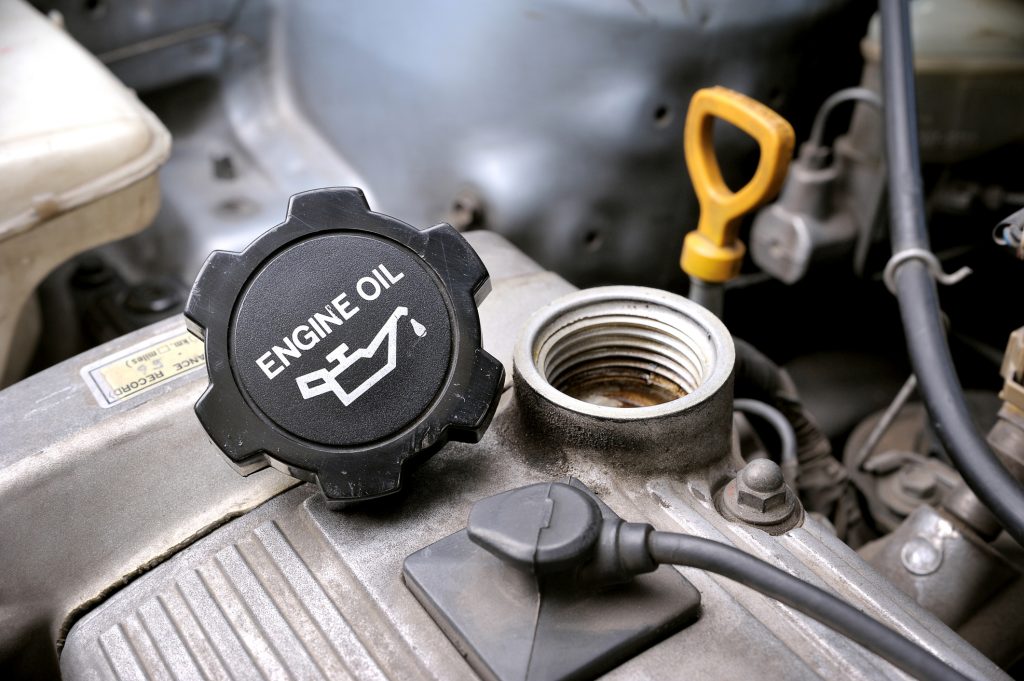
CHECK FOR LEAKS
Any car leaking fluids is generally a red flag for a needed repair. Check under the car to see if there’s any fluid leaking, says CARFAX. Black fluid might be an indicator of leaking oil, while green, yellow or pink fluid may indicate a leak in antifreeze and reddish fluid could be a leak in the transmission or power-steering fluid, says Cars.com.
DETERMINE A FAIR PURCHASE PRICE
To help ensure you’re being charged a fair price, make sure to compare prices for the same make, model and year with several sources. Checking and dealer prices can simply be done online. There are a number of online tools you can use to compare prices, including KBB and National Automobile Dealers Association Guides. Even though condition and mileage will play a role in price, you can still get a ballpark figure of the vehicle’s market value.
DO YOUR RESEARCH
There’s a lot of information online that can help you check on a particular vehicle’s history as well as whether there are any recalls on it.
LOOK UP THE VIN
The Vehicle Identification Number, or VIN, can reveal a lot about a car. Checking a VIN decoder chart is a quick way to see if a used car’s VIN information matches up with what’s in the vehicle title and records, according to Edmunds. There are a number of VIN decoders available online, including one from the National Highway Traffic Safety Administration (NHTSA).The VIN can also be used to see if there are any recalls on the vehicle. You can look up a vehicle by VIN on the NHTSA’s Safety Issues and Recalls page to see if the vehicle needs repairs due to a safety recall. Keep in mind, however, that there may not be information on an older vehicle, any non safety-related recalls or recently announced recalls. Certain brands and international vehicles may also not be listed.
REVIEW THE VEHICLE HISTORY REPORT
A vehicle history report can help you see title problems, ownership history, service points and previous accidents, says KBB. You can get a vehicle history report online for a fee by entering the VIN or license plate number, says Edmunds. If you’re buying through a dealer, though, they may provide a history report for free.
CONSIDER A CERTIFIED PRE-OWNED VEHICLE
Purchasing a Certified Pre-Owned (CPO) car can be a wise choice because it usually offers the buyer an extra level of quality assurance. KBB states that each manufacturer has different standards for CPO vehicles, but they’re typically less than five years old and have less than 75,000 miles on them. Generally, the dealer has checked all major systems and reconditioned the vehicle. Many dealers also offer these vehicles with warranties.
You can find a great deal on a quality pre-owned used car at Wallace Auto Group located in beautiful South Florida in Stuart, Florida. Just minutes down I95 highway off exit 101. They have been proudly serving the Treasure Coast and surrounding areas for over 45 years with New & Used cars.
Wallace Auto Group Owner Makes Automotive News
Bill Wallace of Stuart Fl was born to be in the automobile business. His initiation was washing cars and changing tires as a teenager. It turned out to be a business that he loved.
Bill worked his way up to the presidency of Wallace Ford in Delray Beach. During the 70’s and 80’s he acquired six more franchises, both domestic and imports, which was cutting edge at the time. He built this group into one of the 100 top Mega-Dealers in the country. Car Dealer Bill Wallace sold the Wallace Group to AutoNation in 1997.
After a brief 18 months of working in the Mergers and Acquisitions at this public company he became restless to get back on his own. Due to a non compete agreement the closest business opportunity lay fifty miles north in Stuart, Florida. Over the next two decades Wallace acquired 11 new franchises. The current group is now back to being one of the top 100 privately owned dealership groups in the U.S. Bill has served as past president of the South Florida Automobile Dealers Association (SFADA), past president of South Florida Ford Dealers Association (SFFDA), and board member of Florida Automobile Dealers Association (FADA).
He has also served on the Board of Directors for Duke Comprehensive Cancer Care Center, Delray Beach Chamber of Commerce, Palm Beach County Consumer Affairs, Delray Beach Education Board, and was on the vestry of Saint Paul’s Episcopal Church. The Wallace’s have been philanthropic supporters of many charities in West Palm Beach and Treasure Coast’s Martin County.
Kathy and Bill have been married over 50 years. Their three daughters all went to Duke University. In addition were Franklin College in Switzerland and graduate studies at Berkeley and Stanford. They have seven grandchildren and two Standard Poodles, Kramer and George. Bill is an avid S.C.U.B.A. diver with over 1700 hours of diving. He enjoys working out and time spent on the golf course.
You can check out the many franchises that he owns currently today at Wallace Automotive Group Dealership’s in Stuart Florida. Each location has award winning service departments and certified factory trained technicians.




